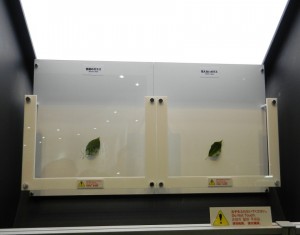
An invisible glass like the one developed by Nippon Electric Glass Co could really make a difference in how much of Sun’s rays are actually hitting the photosensitive area of a solar cell and ultimately its efficiency.
The scientists who invented the invisible glass had in mind to reduce reflections to the maximum, so that it can be used in a large variety of applications, ranging from phone screens to solar panels.
In a normal glass substrate, only 92 percent of the light passes through, while the rest is being reflected back. In the invisible glass, only 0.5 percent is reflected, while 99.5 percent of the light passes through.
 Follow
Follow